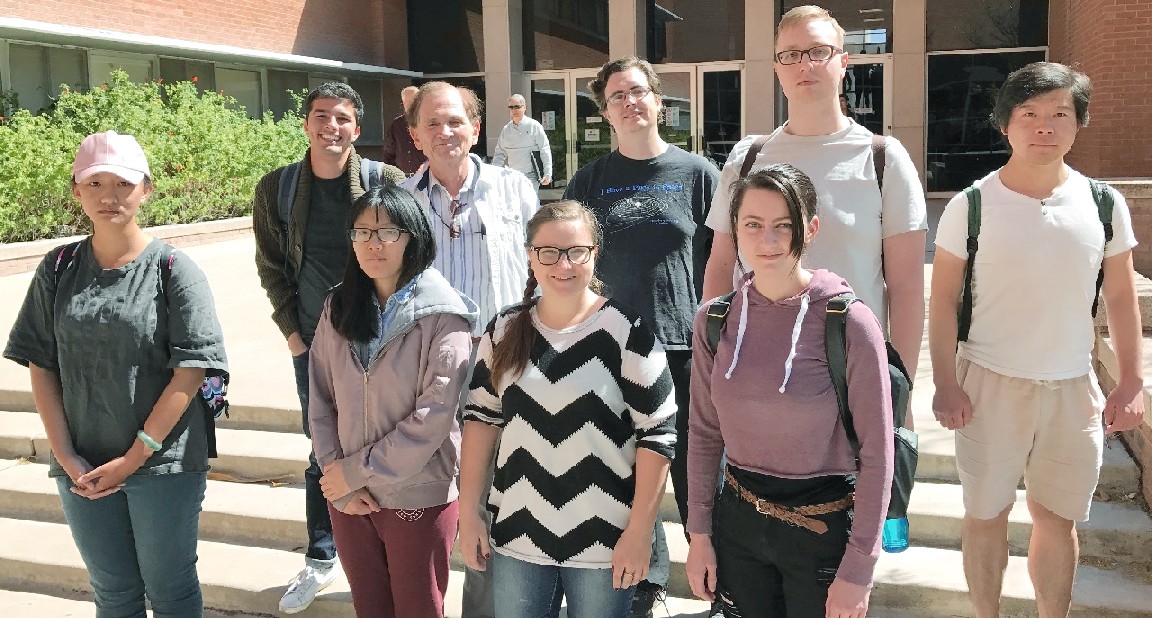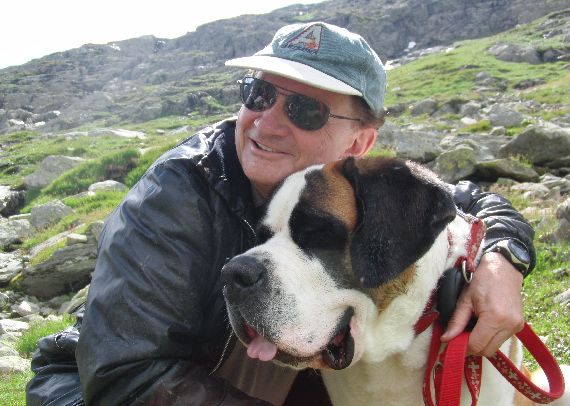Zoom scene, Spring 2020; group meeting + lecture showing graduate research students
-
Stefan Evans
-
Martin Formanek
-
Chris Grayson
-
Will Price (in progress)
-
Andrew Steinmetz
-
Cheng Tao Yang
-
Also in picture: Sarah Blask, visiting from another research group
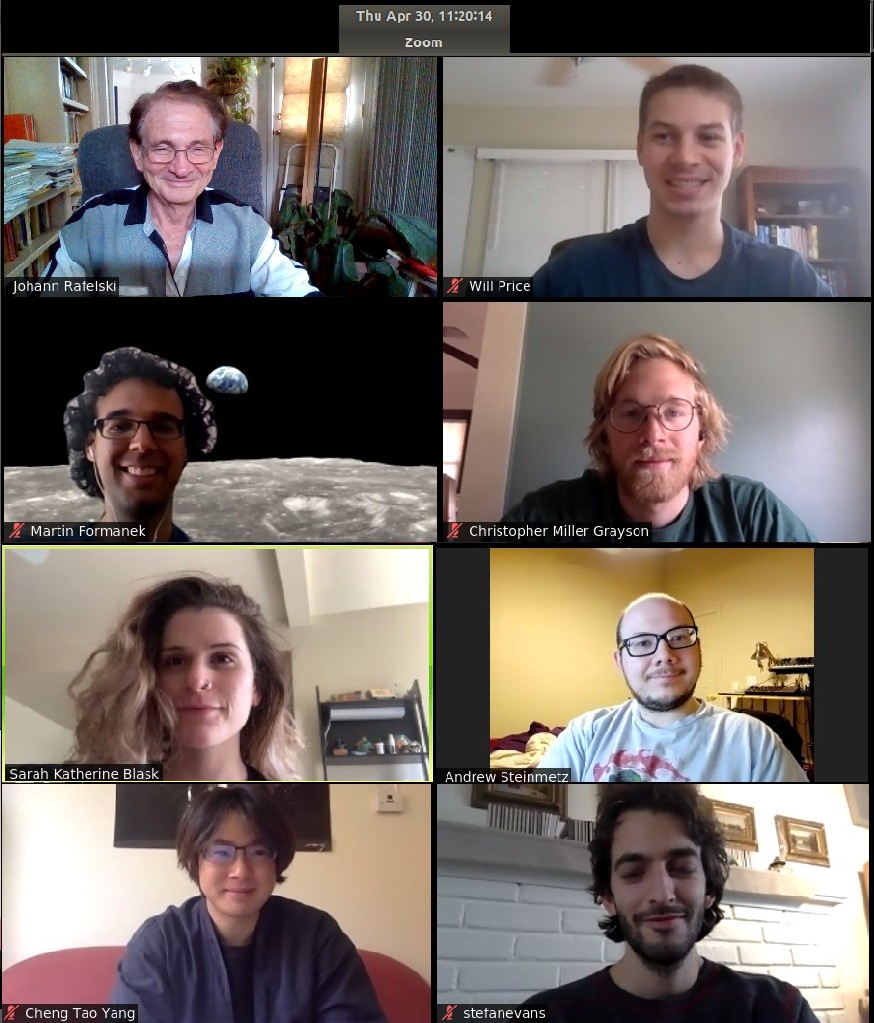
I supervise as Thesis Director Spring 2020:
Student Dinner
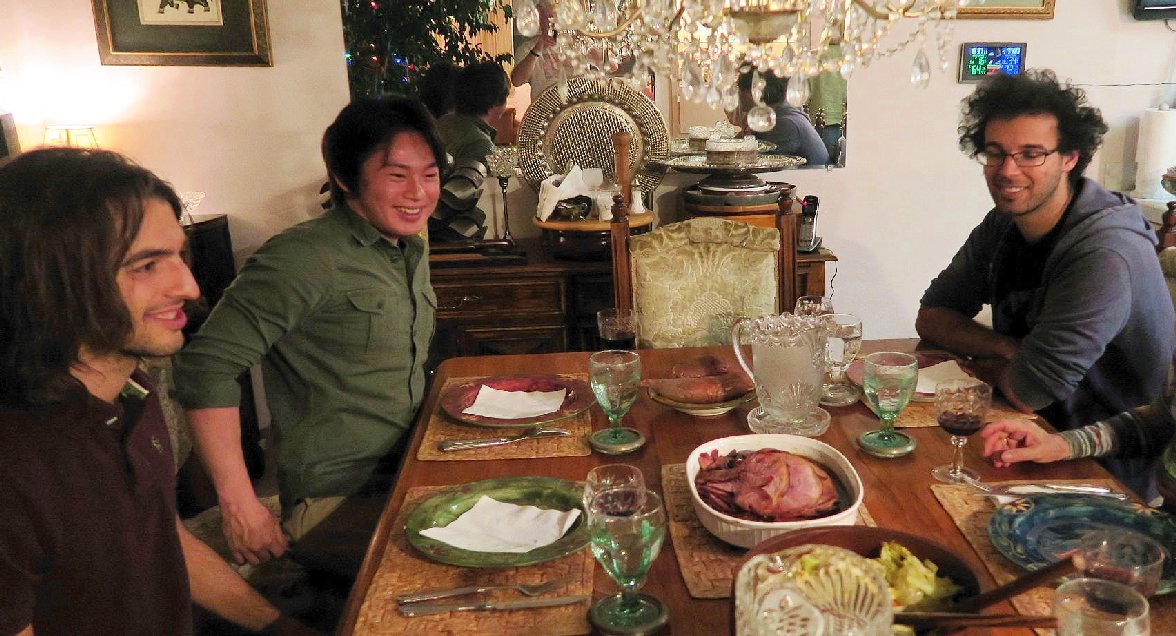 Cheng Tao Yang (left in picture) and Martin Formanek (on right in picture)
Cheng Tao Yang (left in picture) and Martin Formanek (on right in picture)
-
Jeremiah Birrell (where the Web was born picture on right side) Applied Mathematics Program graduate student where I am member; PhD thesis August 2014 on "Non-Equilibrium Aspects of Relic Neutrinos: From Freeze-out to the Present Day". Jeremey explored how some of e+e- plasma energy reheats the neutrinos and compares to constraints from cosmological evolution that are today available, and considered how these processes depend on natural constant and how constant these constants are. Jeremiah's applied math background allowed us to develop a new Boltzmann equation solver which accounts for chemical non-equilibrium process. This new tool could also serve in the study of quark-gluon freeze-out process. Jeremiah Birrell starts in September 2017 as an assistant Professor at University of Massachusetts Amherst (applied) Mathematics Department.
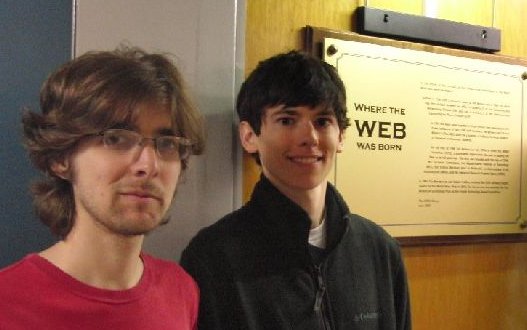
-
Michal Petran . (defense presentation picture) PhD in December 2013 with a thesis
Strangeness and charm in quark-gluon hadronization .
Michal explored the principles governing the hadronization of the expanding QGP fireball, and obtained its properties. He expanded the SHARE project to include CHARM module, see
SHARE (Statistical HAdronization with REsonance) with CHARM
program which allows to account within the statistical hadronization approach for the contribution to hadron abundances from the charm hadron decays. Michal was head-hunted out of a postdoctoral appointment in Prague (his home town) and is presently working on the eyes and brains for self-driving vehicles.
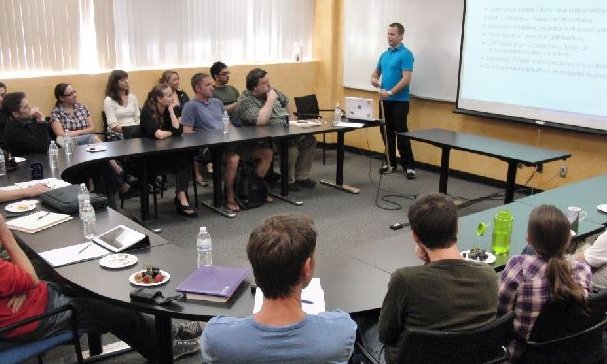
-
Lance Labun (where the Web was born picture on left side) Completed his PhD in December 2011 with a thesis
"Structure and Decay of QED Vacuum" where several topics in the area of strong field physics are addressed as related to the properties of the energy-momentum tensor in presence of strong fields and possible relation of vacuum fluctuation energy to the dark energy content of the Universe. After a fellowship at the Leung Center for Cosmology and Astrophysics (LeCosPa) in Taipei, Lance joined the Research Group of Prof. Manuel Hegelich in Austin, TX. at the University of Texas Center For High Energy Density Science.
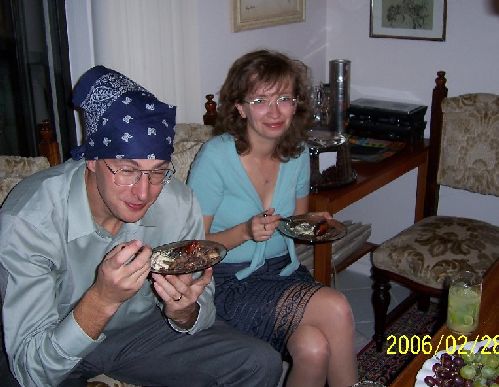
-
Inga Kuznetsova (where the Web was born picture on left side) Completed her PhD in Summer 2009 with a thesis "Particle Production in Matter at Extreme Conditions", working on hadronization process and evolution of hadrons in the early Universe, and on strange and heavy flavor quarks as signature of QGP in laboratory experiments, and on relativistic QED plasma physics in intense laser fields. We see her on right in the picture next to her husband at a party in 2006. Inga is a post-doc volunteer working with me in development of improved understanding of heavy flavor in quark-gluon plasma.
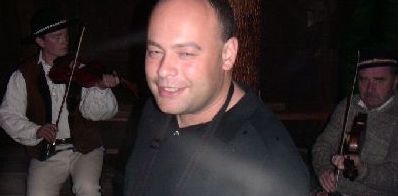
-
Giorgio Torrieri (gentleman at a music fest) Completed his PhD in Summer 2004 with the thesis
"Statistical hadronization phenomenology in heavy ion collisions at SPS and RHIC energies". This thesis explored the production of hadron resonances along with general characterization of the QGP source of particles produced. Giorgio has developed and helped to maintain -- till the project was take over by M. Petran (See above) the analysis tool,
SHARE (Statistical HAdronization with REsonance)
which allows a precise model description of experimental
particle yield and fluctuation data. After postdoctoral and fellow appointments at McGill, Frankfurt, and Columbia University, Giorgio took up a professor position in Campinas Brazil and is today tenured at the Departamento de Raios Cosmicos e Cronologia (Cosmic Rays and Cosmology) and a member of the Grupo de Fisica Hadronica (GFH)
Other collaborating GRADUATE STUDENTS
-
Yaron Hadad A student in Math Department worked with us 2008-2010 and published
several papers, however he completed his PhD under supervision of Vladimir Zakharov in 2013 and started his own company.
-
Christopher Dietl Exchange Graduate Student from Germany, collaborated in 2011/12 on gravitationally bound dark matter particles in ultra dense objects. Two joint publications
-
Steven Steinke Passed to Candidacy of his PhD in November 2004 with us and he completed several publications in our group. His want for understanding of foundational quantum mechanics had driven him to engage under supervision of than head of the Physics Department, Pierre Meystre. Steve graduated in May 2011 with a thesis Quantum Collective Dynamics From the neV To the GeV including in the thesis his graduate work with us: Steve worked on SHARE when it was first designed; we see him in group on extreme left, on extreme right is again Giorgio Torrieri.
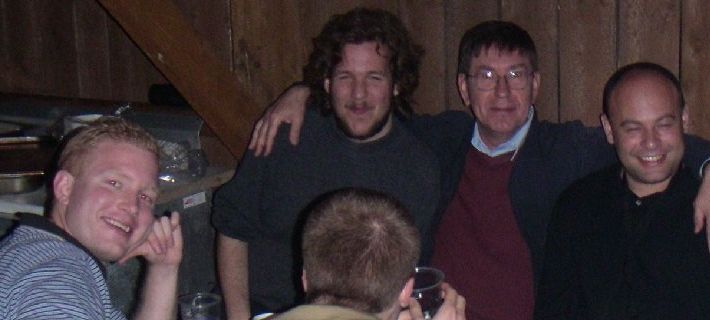
GRADUATE research Ph.D. opportunities
My current research interests and funding
encompass the general topics of Theoretical Physics in the areas of Particle, Nuclear, Relativity, Cosmology. The US Department of Energy, Office of Science, Nuclear Physics after more than 25 years of support does not today fund my research effort,. All research associates (4 grads and one postdoc) are volunteers. If you join the group you will need to give in your heart preference to research over other comfort. The following is a short characterization of related research areas. For more information contact me. Also look at my research pages but check the date on this as I not always find time to update. Detailed research objectives are jointly defined and developed with the research student. The best way to see how this could work is to do an uncommitted independent study which usually follows a class you take with me.
- Quark-Gluon Plasma in laboratory: flavor production and hadronization
- Lattice-QCD constraints on properties of laboratory formed quark gluon plasma;
- heavy (charm, bottom, top) quarks n in quark gluon plasma;
- strange particle production and evolution in quark gluon plasma;
- matter production in quark gluon plasma hadronization.
- Evolution of Early Universe from the quark gluon plasma phase to photon freeze-out
- Hadronization of quark-gluon plasma in early Universe;
- Neutrino freeze-out process and free-streaming evolution;
- Neutrino cosmic quantum fluid;
- Detection of cosmic neutrino background;
- Impact of electron-positron and neutrino plasma background on nucleosynthesis;
- Dark matter and high density compact objects
- Ultra strong (laser generated) fields; quantum vacuum structure; laser fusion
- Strong fields and vacuum structure, particle production;
- Anomalous magnetic moment phenomena, compatibility with relativistic quantum mechanics;
- Critical acceleration, inertia, radiation reaction;
- Relativistic plasma and laser driven pB fusion
UNDERGRADUATE STUDENTS
UNDERGRADUATE research experience and Honors Thesis
We offer opportunity for active participation in the research activities which can earn credit through independent study and thesis (honors program). Tasks assigned depend on skill, interest, preparation level. Independent study offered is aiming to prepare for research. Our undegrad students were typically admitted to best graduate schools and are today engaged in an academic career.UNDERGRAD EXPERIENCE/PREP EXPECTED:
1. Physics and/or Astro and/or Math major with GPA>3.8 in core exact science classes.
2. Senior and cross-listed under/graduate level physics courses
3. Competence in scientific programming such as FORTRAN or C, Mathlab or Mathematica or similar
Spring 2020 undergraduate research students Andrew Carroll, Blake Lee
Spring 2019 undergraduate research student Will Price, Gustavs Kehris
UNDER/GRADUATE Capstone Quantum cross-listed class
Fall 2020, Spring 2019, Spring 2017 teaching: Advanced Quantum Mechanics PHYS572_472 (handout) andClass Photo 2017 (note symmetry under gender transformation)
